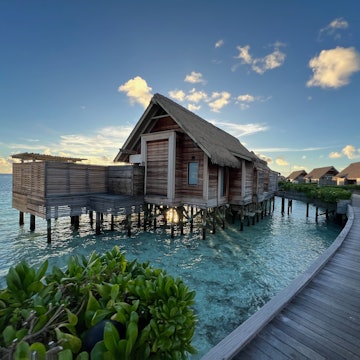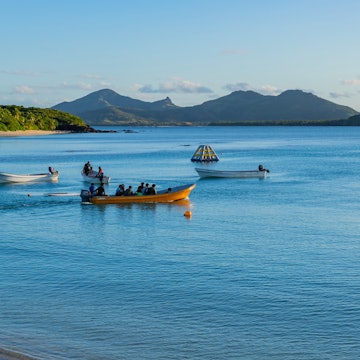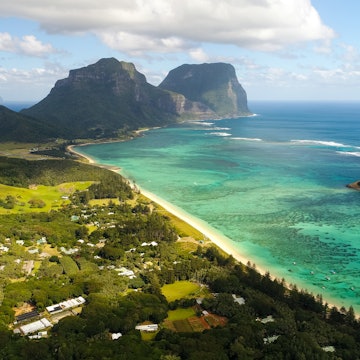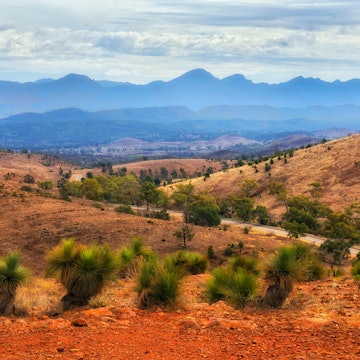

One Foot Island (Tapuaetai) in the Aitutaki Lagoon, the Cook Islands. Jessica Lockhart/Lonely Planet
When I first moved to New Zealand, one of the things that baffled me most about Kiwi culture was their devotion to holidaying in the Cook Islands. Don’t get me wrong – I get the appeal of waving palm trees and sun-soaked beaches, especially in the frosty depths of winter. But I didn’t quite understand the grip that Rarotonga – the country’s biggest and most-visited island – specifically seemed to have over New Zealanders. Why not Fiji? Or Vanuatu? Or heck – even Australia?
When I posed this question to Craig Tansley – a Lonely Planet writer who was born in the Cook Islands – his answer was straightforward: “No one spends much time just in their resort in the Cook Islands. In Fiji, some visitors never leave theirs.”
Within moments of landing on “Raro” (as Rarotonga is affectionately known), I could see exactly what he meant – at times, it was hard to differentiate the locals from the tourists. Nearly everything is proudly locally owned, which means tourists aren’t sequestered away behind the walls of foreign-owned chain resorts. Instead, it’s virtually impossible not to participate in community tourism.
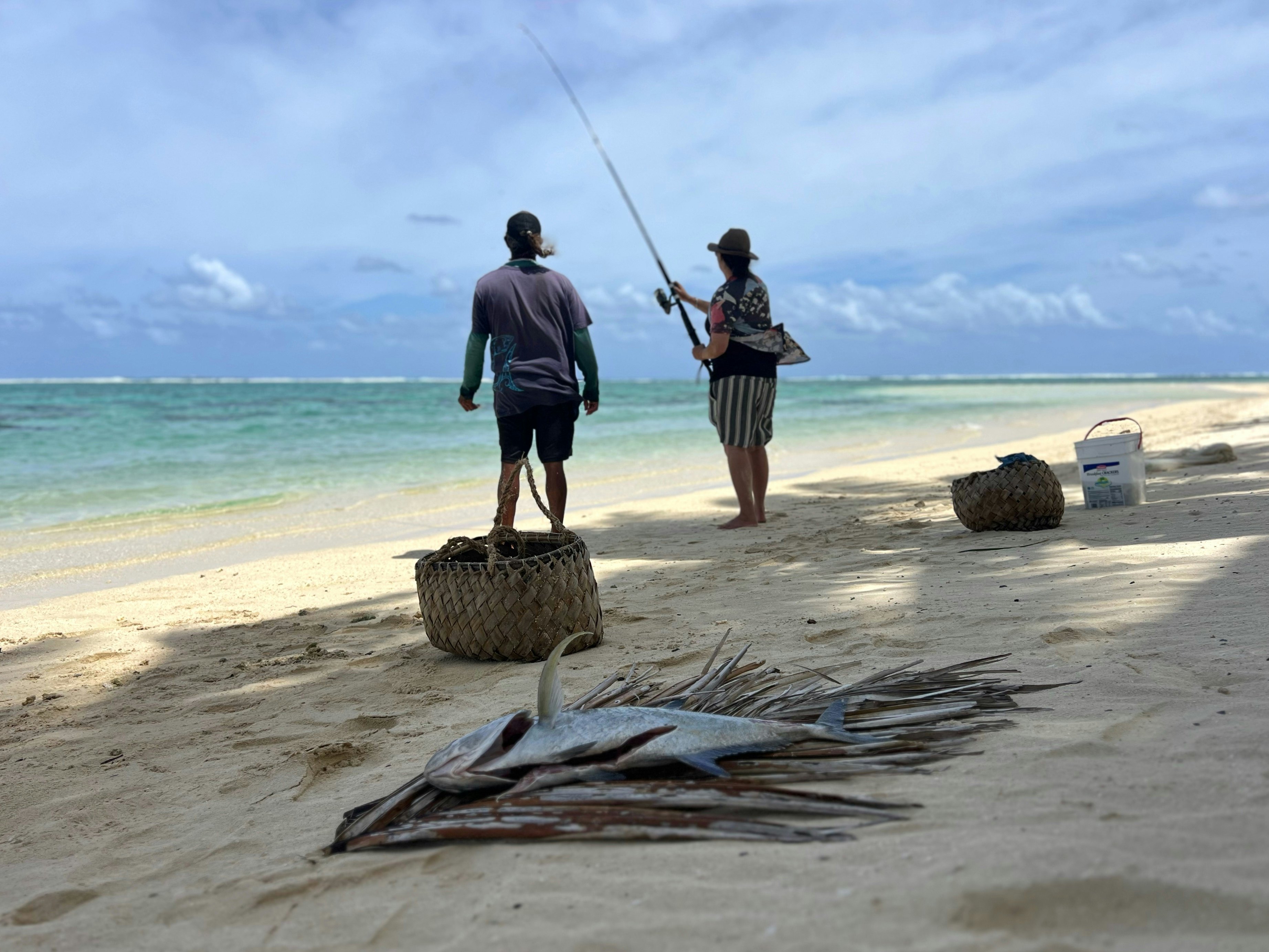
Relaxing on the beach? Don’t be surprised if a local lures you into holding their fishing rod so they can clean their catch. Hungry? On a progressive dinner tour, you can dine in the homes of locals. At loose ends on a Sunday morning? Your faith (or lack thereof) doesn’t matter. Everyone is welcome at church, where the congregation’s beautiful waiata (songs) wash over you.
We also loved how comfortable my partner and I felt as a same-sex couple (which unfortunately isn’t true in some other South Pacific destinations). Recent changes to legislation – led by a very active local LGBTIQ+ community, including the country’s first transgender mayor, who was elected in March 2025 – make the Cook Islands a safe and welcoming destination for LGBTIQ+ travelers.
Regardless of whether you’re a Kiwi considering visiting the country’s most beloved holiday destination, an Aussie looking for an alternative to Bali, or an international visitor eager to dip your toes in the South Pacific, here’s everything you need to know for the ultimate week in the Cook Islands.
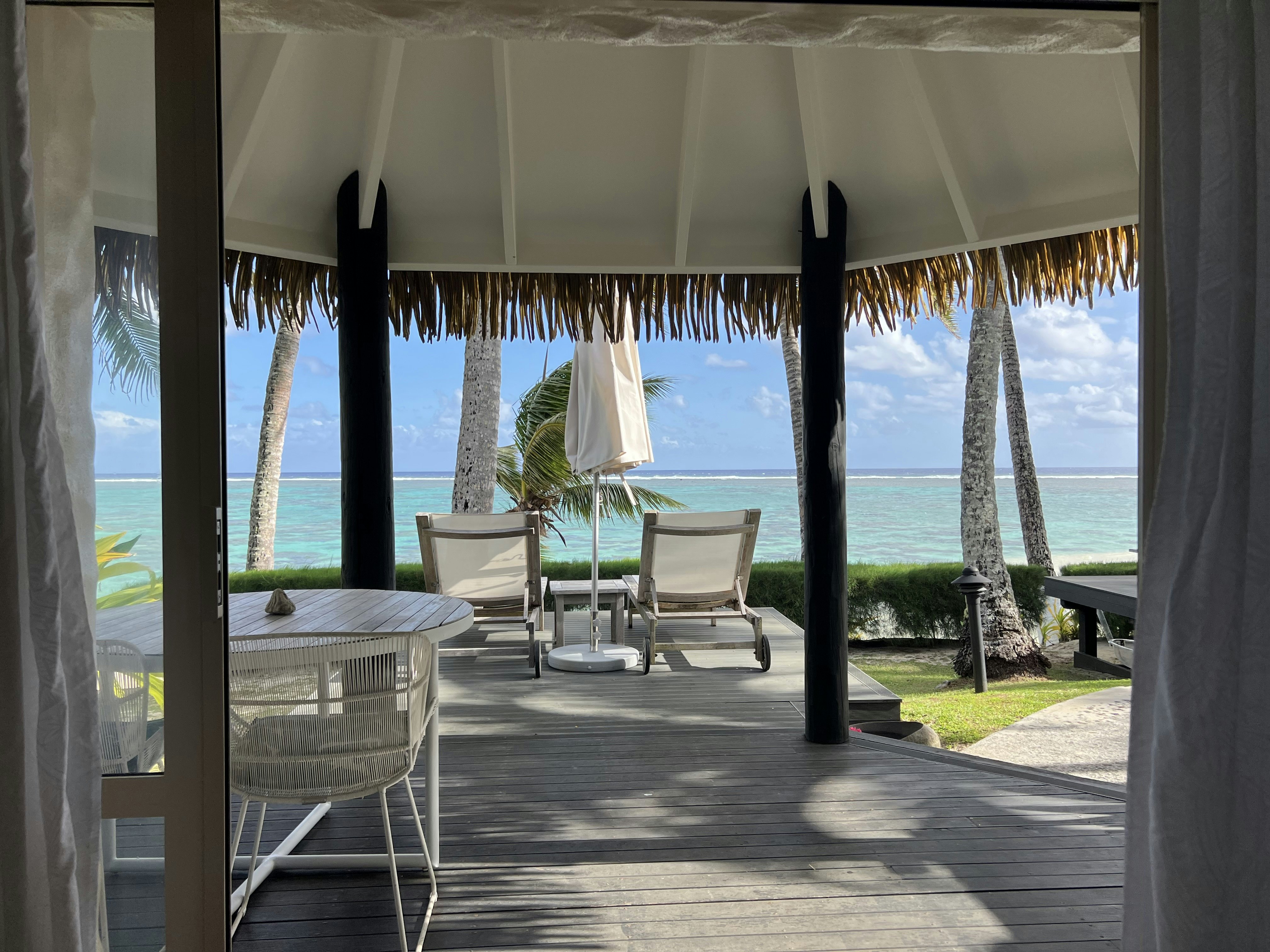
Getting to the Cook Islands
Traveling from Auckland, New Zealand to Avarua on the island of Rarotonga – one of the most popular flight paths – is about as close as it gets to time travel. After just four hours in the air, you’ll disembark to discover that you’ve traveled nearly a full day back in time, thanks to jumping just across the International Date Line. If you catch an Air New Zealand flight on Saturday morning, for example, expect to arrive on Friday afternoon. Double-check to ensure your hotel bookings are for your correct arrival date.
You can also get to the Cooks from Papeete, French Polynesia (via Air Tahiti and Air Rarotonga), while weekly direct flights operate from Sydney, Australia (Jetstar) and Honolulu, USA (Hawaiian Airlines). Starting in May 2026, Jetstar will also offer direct service from Brisbane.
From Rarotonga International Airport, Air Rarotonga planes depart daily for domestic destinations, including Aitutaki.
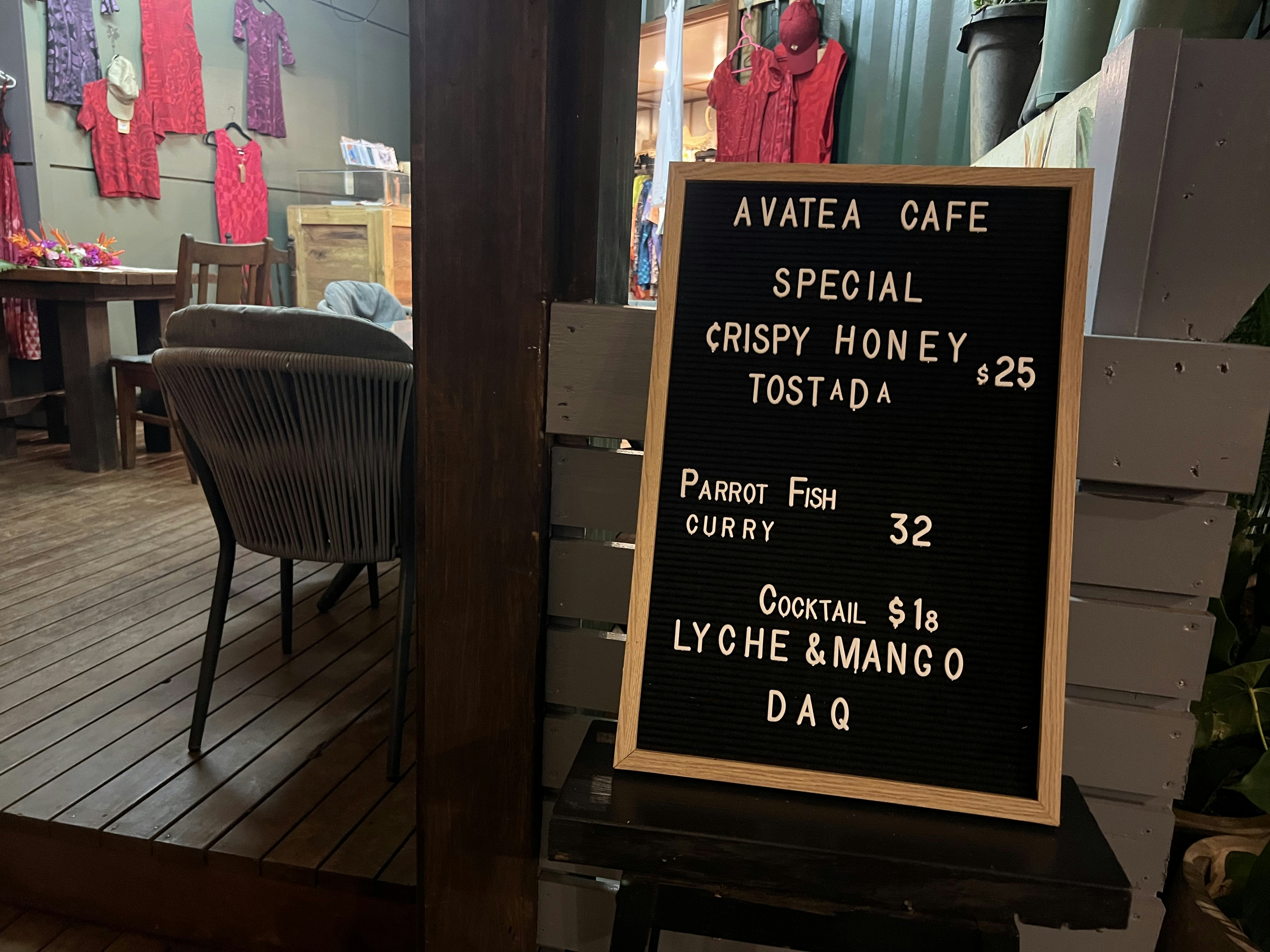
Getting around Rarotonga and Aitutaki
Taxis will happily deliver you to your beachside accommodations, but if you want the true island experience, hop on Rarotonga’s public bus (adults NZ$5/US$3). It circles the entire island in about 50 minutes; the only thing you’ll need to do is figure out whether to take the clockwise or anticlockwise bus. You can rent a car on Rarotonga, but the bus stops nearly everywhere you’ll want to go. (Plus, it saves you the headache of trying to find parking at popular restaurants and venues.)
On both Rarotonga and Aitutaki, tour operators will typically pick you up directly from wherever you're staying. If you’d prefer to free-wheel, many hotels offer bicycles for their guests to use. Your final option is to rent a scooter – but you’ll need a motorcycle license in your own country and to obtain a visitors’ license from the police station (NZ$20/US$11.85) before doing so.

Where to stay
On Rarotonga, you’re spoilt for choice, with most accommodations located directly along Ara Tapu (the main road, which encircles the island). Forgo the temptation to stay near Avarua (the main town on the island’s northern end); you won’t find much there in the way of beach.
Instead, look to the island’s south or southeastern shores, where the lagoon is much wider. Choose a spot with an in-room kitchenette. If you stock up at one of the small grocery stores, you’ll be well-equipped to prepare your own breakfasts and lunch.
Here are our top picks of areas to stay in:
Muri Beach: Plenty of lodgings can be found along Muri Beach on Rarotonga’s southeast side. It has some of the best snorkeling access, including at nearby marine park, Fruits of Rarotonga. Take your pick of different types of accommodations: there are Airbnbs and guesthouses, family-friendly resorts and adults-only getaways.
Titikaveka: If you have the budget to splash out, choose to stay in Titikaveka on Raro’s southern shores. With more boutique-style accommodations, this is where you’ll find uncrowded beaches. At Motu Beachfront Art Villas, there is direct access to pristine waters straight from one of the resort’s 10 self-contained bungalows. Don’t miss mixing your own drink at the poolside honesty bar.
Aitutaki: Accommodation options are more limited on this tiny island. Tamanu Beach Resort has 22 classic beachside bungalows – complete with thatched roofs and outdoor showers – situated in a tropical garden.

What to pack
Channel Tom Selleck in Miami Vice. Moustaches are optional, but lightweight floral shirts are an absolute must. Don’t own one? Don’t worry; they fill the racks at Rarotonga’s market stalls, as do pareu (sarongs). Snorkeling gear is easy to borrow or hire, but bring your own reef shoes. They’ll help protect your feet from venomous stonefish, which are lurking in the lagoons around Rarotonga and Aitutaki.
Once your bag is packed with all your most colorful beachwear, cram in one outfit that meets the definition of “Sunday best” – and we mean that quite literally. If you plan on attending church (more on that below), you’ll need at least one good outfit to cover your shoulders and knees.

Saturday: Take a trip back in time to Friday in Rarotonga
Leave the DeLorean with the valet. Time travel today will come courtesy of Air New Zealand or Jetstar, the main airlines to service the Cook Islands from New Zealand and Australia respectively. It’s only a four-hour flight from Auckland, but if you leave on a Saturday, you’ll arrive on a Friday. If you don’t already have an eSIM, stop by the Vodafone kiosk (just outside the arrivals terminal) when you land to grab a physical travel SIM card.
Jumping time zones is tiring work, so keep it simple. After getting settled into your beachside accommodation, scope out the surrounding lagoon and have a quick snorkel. Then, head over to the Tamarind House Restaurant and Bar for dinner. A heritage property set on 2.5 acres of gardens, it has sweeping views down to the lagoon, so it’s best to make a booking for just before sunset. Be sure to order the ika mata (raw fish) as a starter. This ceviche-style marinated fish (often tuna) in coconut cream is the country’s most iconic dish.

Saturday (Cooks Islands' time): Morning markets, dinner and a show
If you enjoyed Saturday, you’re in luck: you get to live it all over again!
Start your morning with a wander through Avarua’s Punanga Nui Markets, chilled coconut in hand. This is the official market day, when around 130 stall owners set up to sell their wares – including food, clothing and crafts – from 8am until noon. Arrive early if you’re self-catering and want the best selection of food. Otherwise, time your visit for a more leisurely 10am, when cultural performers and musicians grace the stage in the market’s center.
Spend your afternoon adjusting to island time. Suggested acclimatization activities include: snorkeling or stand-up paddleboarding on the lagoon; reading beside the pool while sipping a cocktail; or indulging in a good ol’ nap.
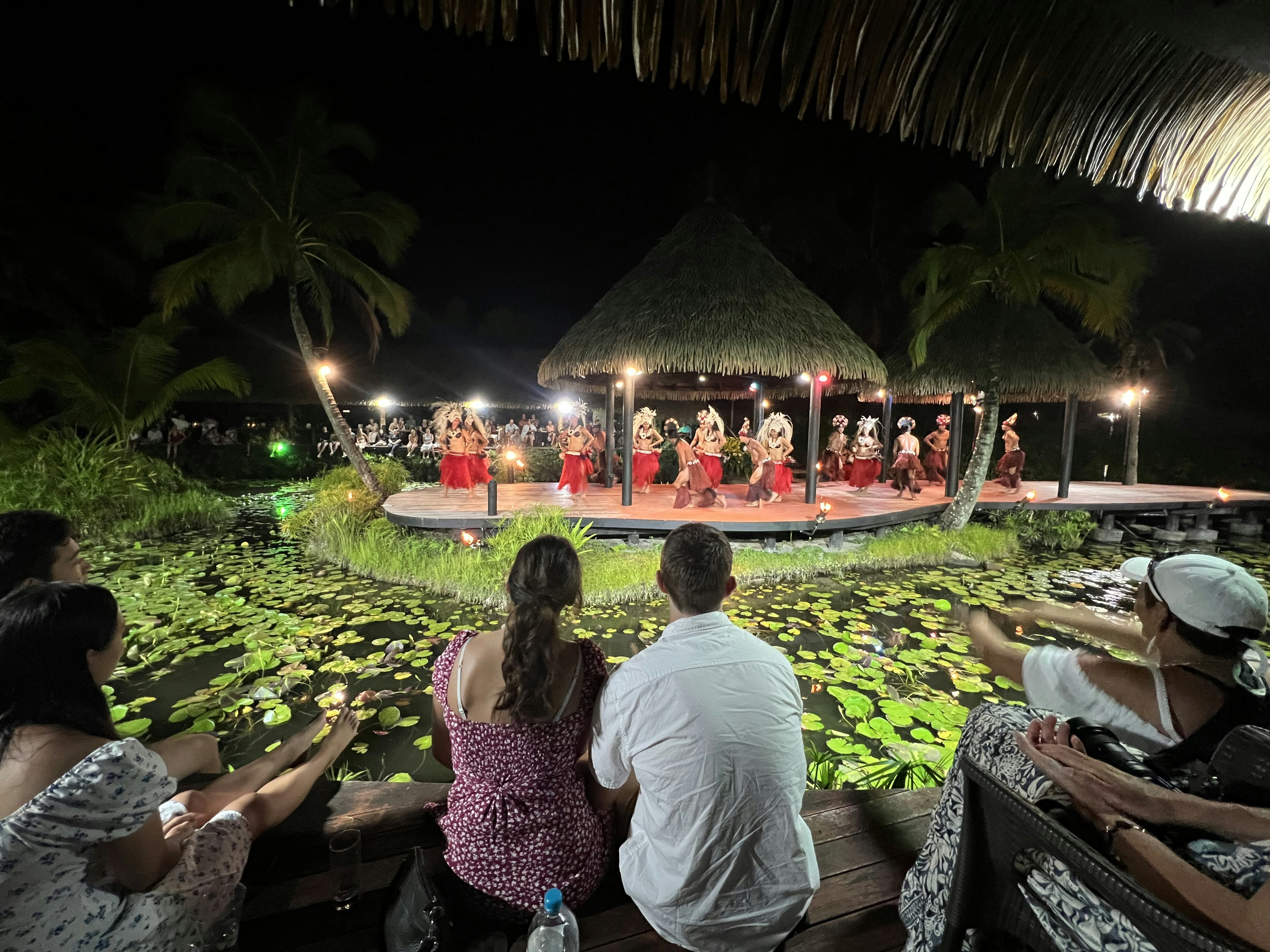
That night, in the beautiful garden setting of Te Vara Nui Village in Muri Village, dig into a buffet dinner. Don’t miss Cook Islands classics, including ika mata, poke (a gelatinous dish of bananas or pumpkin with coconut cream) and rukau (taro leaves cooked with coconut milk).
Then, be captivated by the hour-long show, performed on both floating and fixed stages over a tranquil lagoon. Lit by torchlight, the island’s most talented musicians and dancers tell the story of an early Polynesian explorer. Tickets start from NZ$155 (US$92) for adults and NZ$75 (US$44.50) for kids, with packages for families. It's held Tuesday, Thursday and Saturday nights at 5:30 or 6pm, depending on the season.

Sunday: Praise the day before hitting up the night markets
I’m a firm believer that to better understand a country’s people, you should meet them where they gather. My favorite ways to do this are by perusing the local supermarket, getting a haircut, and going to a place of worship.
Fortunately, on Rarotonga, it’s entirely normal – and even encouraged – for tourists to attend one of the island’s roughly 70 churches. Even if you’re not religious, it’s worth going just for the church fashions, with parishioners serving up floral shirts and intricately woven coconut palm hats. (I attended the service at Aorangi CICC and sat up on the second level for the best view.)
The divine singing, however, is the main attraction. In some churches, the words to hymns (in Cook Islands’ Māori) are included on screens so you can follow or even sing along. Regardless of your beliefs, it’s hard not to be moved by the music. Make sure to dress modestly (cover your knees and shoulders) and aim to arrive around 10am for most services.
Spend the afternoon at your leisure, swimming, snorkeling or relaxing. (Do you sense a theme here?) Sunday is also one of the nights when the Muri Night Markets are held, starting from 5pm. Unlike the Saturday morning markets at Avarua, this popular market serves up hot prepared foods – including curries, fresh seafood and barbecued meals. The most popular stalls have long lines, so arrive early before they sell out.

Monday: Snorkel with turtles and dine with locals
Rarotonga’s lagoon is a favorite hangout spot for spotted eagle rays and green sea turtles, who are attracted to the Avaavaroa Passage on the island’s southern end. A break in the reef creates a strong current resulting in a natural highway between the lagoon and the open ocean.
If you jump in the water here, you’re nearly guaranteed to see dozens of turtles. But the currents can also be difficult for even strong swimmers to navigate – which is why Ariki Adventure’s “sea scooters” are so fantastic. The lightweight devices – which look kind of like a video camera with handles – are essentially e-bikes for the ocean. They just make everything easier. With multiple settings, they allow you to stay in the water for longer and can be used by kids aged 7 and up. Tours with experienced guides last for roughly two hours and cost NZ$189 (US$112).
Even with the help of the sea scooter, you’ll likely be tired out after the swim, so you’ll want to (you guessed it!) spend the afternoon resting up. After all, you’ve got a full night ahead: on a Progressive Dinner with Cook Island Tours (NZ$125/US$74 adults; NZ$80/US$47 kids), you’ll travel to the homes of three local residents, each serving a different course – all to the soundtrack of a musician who will follow you from house-to-house, not unlike the rooster in Disney’s Robin Hood.
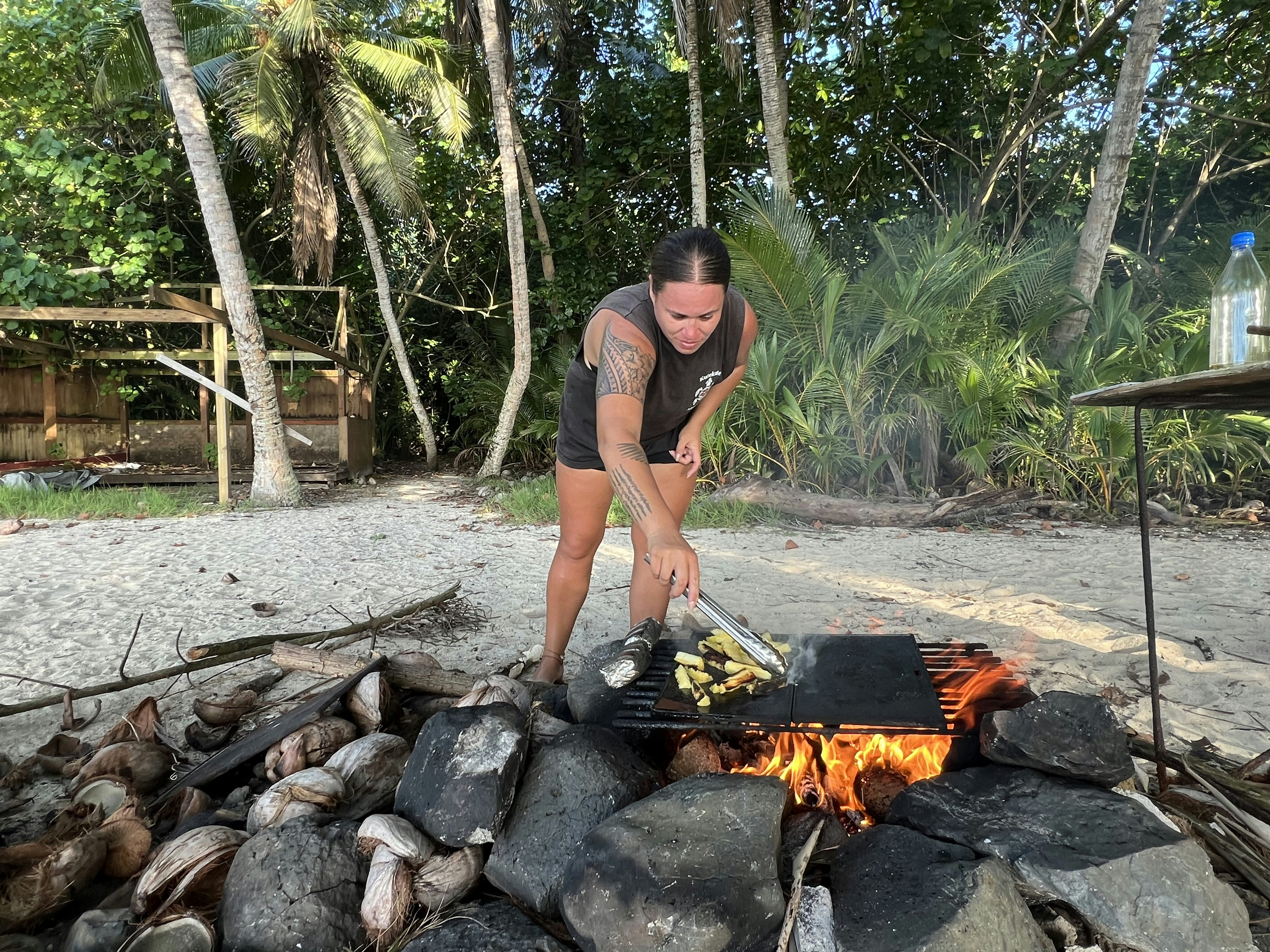
Tuesday: Cycle Rarotonga’s backroads before catching a flight to Aitutaki
On your last morning in Rarotonga, it might be tempting to sleep in. But trust me, it worth doing one last tour with Corinne Tucker of Storytellers Eco Cycle Tours.
Originally from New Zealand, Tucker has a unique insider-but-outsider perspective on life in Rarotonga, which shapes her laid-back cycling tours (from NZ$119/US$70) along the back roads. No question is too big or too small for the environmental sociologist, who has literally written the guidebook to Rarotonga’s sites of cultural and historical significance. Tours are catered to your interests (whether it’s finding hidden marae or sampling noni fruit straight off the tree) and include a beachside lunch.
Then, it’s time to pack up and wave goodbye to Rarotonga as you fly towards the island of Aitutaki, just 40 minutes away. Be sure to look out the window as you approach; Aitutaki is said to be home to the world’s most beautiful lagoon – and while I’m not a fan of superlatives, this is one claim I truly can’t refute. It’s absolutely stunning.
For dinner, soak in more of those views by heading to Pacific Resort Aitutaki. Perched high above the ocean, its restaurant showcases the island’s best sunset views.

Wednesday: Watch the sunset from your own private island
The main attraction in Aitutaki isn’t on land, but rather out on the water. Its triangle-shaped turquoise lagoon is massive, with around 15 motu (islets) to explore – including One Foot Island/Tapuaetai (home to one of the world’s most remote post offices); Honeymoon Island/Maini Iti (a spectacular stretch of sand that feels designed for a proposal); and Moturakau (where the TV series Survivor: Cook Islands was filmed).
Take the morning slow, then get picked up for your private sunset lagoon tour with Kutekute Tours. It’s the only operator that heads out in the evening, meaning you’ll have the whole lagoon – including its coral reefs and motu – to yourself. You’ll snorkel with giant trevally, explore Akaiami beach (where Marlon Brando and John Wayne famously stopped and swam as passengers on the mid-century “Coral Route”) and float on hammocks down an ocean current. The night is capped off with a sunset barbecue cooked over a bonfire on Moturakau’s beach.

Thursday: Spend your last day snorkeling in Aitutaki’s lagoon
It might sound excessive to head out on the Aitutaki Lagoon two days in a row, but once simply isn’t enough. During your evening cruise with Kutekute, you’ll watch the landscape be transformed by shades of pink and purple. But nothing beats the Aitutaki Lagoon during the day, when it shines the most brilliant shades of blue.
You also won’t be repeating what you did the day before. Teking Tours has private snorkeling spots and hits up different islands than Kutekute on its five-hour cruise (NZ$250/US$148), which includes a barbecued lunch.
For dinner, settle in at Avatea Cafe. It’s located inland, so there are no sea views – but you won’t even care once your beautifully plated meal arrives. Dishes at the family-owned business are as tasty as they are gorgeous, with seasonal seafood specials. This is also the place for the cocktail of your dreams: think pina coladas made with fresh coconut cream, Aitutaki-grown pineapples and local rum. You’ll need it to “cheers” to a South Pacific vacation truly unlike any other – and all the incredible Cook Islanders that you’ve met along the way.
Jessica Lockhart visited Rarotonga and Aitutaki at the invitation of Cook Islands Tourism. Lonely Planet does not accept freebies for positive coverage.








